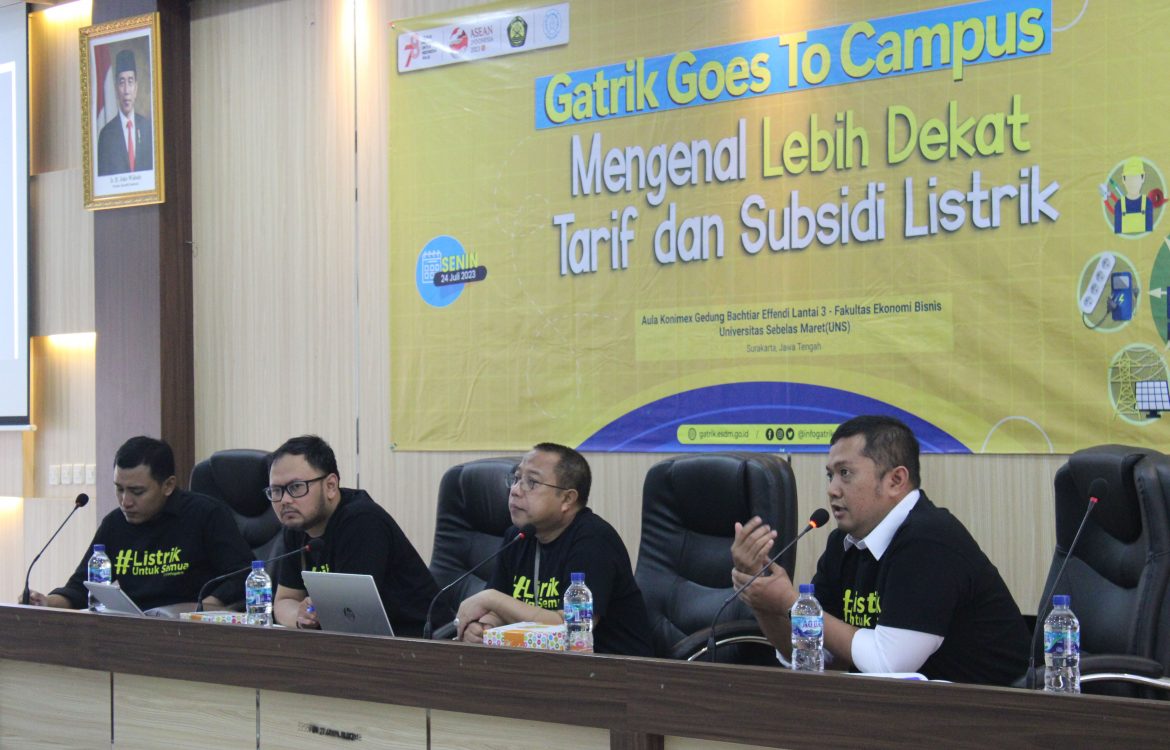
Gatrik Goes to Campus (GGTC) 2023, Get Closer to Electricity Rates and Subsidies
Gatrik Goes to Campus 2023 under the theme “Getting to Know More About Electricity Tariffs and Subsidies,” was organized by the Directorate General of Electricity (Gatrik) of the Ministry of EMR in collaboration with the Faculty of Economics and Business (FEB) and the Student Executive Board (BEM) of FEB, Universitas Sebelas Maret (UNS), July 24, 2023 at the Konimex Building Hall, Bachtiar Effendi Building 3rd Floor.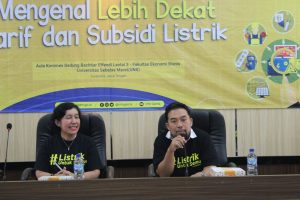
Bhimo Rizky Samudro, S.E., M.Sc., Ph.D., Head of the S1 Development Economics Study Program, on behalf of the Dean of FEB, welcomed the GGTC activities whose targets were students at UNS. Hopefully, public awareness of electricity can be improved along with this activity and material from the three speakers, as well as it can bring additional insights for students, for example by saving on electricity consumption.
Ida Nuryatin Finahari, Secretary of the Director General of Gatrik, said that the current activity in FEB UNS was the first event involving the Director General of Gatrik. “This agenda is organized because we see that in everyday life, electricity is crucial for the community. However, not everyone understands how electricity tariffs and subsidies are arranged. Why students? We believe we are at the right place. We have never conveyed this detail to students before. That is why we are introducing electricity tariffs and subsidies to students in collaboration with FEB UNS,” she explained.
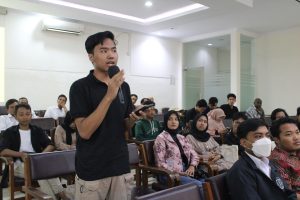 Furthermore, it is said that there are approximately 83 million electricity customers, almost half of which get subsidies. There are 38 types of customers. Out of the 38 customers type, 25 customers are still subsidized and 13 are not. But every 3 months there is a tariff adjustment and if Gatrik does not adjust the tariff, then the government will provide compensation. Both subsidies and compensation are a burden on the government finance.
Furthermore, it is said that there are approximately 83 million electricity customers, almost half of which get subsidies. There are 38 types of customers. Out of the 38 customers type, 25 customers are still subsidized and 13 are not. But every 3 months there is a tariff adjustment and if Gatrik does not adjust the tariff, then the government will provide compensation. Both subsidies and compensation are a burden on the government finance.
In terms of policy, the Young Policy Analyst of the Directorate General of Electricity, Syariffudin Ahmad said that the electricity subsidy policy for fiscal year of 2023 aims to provide targeted electricity subsidies with harmonized economic recovery and community purchasing power; to ensure that electricity subsidies for households are given in a targeted manner for poor and vulnerable households; and to encourage the development of more efficient new renewable energy.
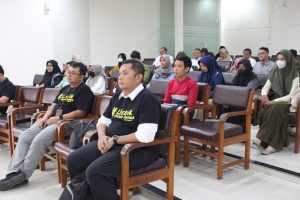 The Tariff adjustment policy is determined by the Board of Directors of PT PLN (Persero) after obtaining the approval of the Minister. Tariff Adjustment itself is applied to non-subsidized customers every three months due to several uncontrollable factors (exchange rate, inflation, ICP, and coal prices). Tariff Adjustment is a national-scale policy, a crucial, strategic, and has a broad impact on the community, thus in its own discussion, it is carried out at the Plenary Cabinet Session or Limited Meeting.
The Tariff adjustment policy is determined by the Board of Directors of PT PLN (Persero) after obtaining the approval of the Minister. Tariff Adjustment itself is applied to non-subsidized customers every three months due to several uncontrollable factors (exchange rate, inflation, ICP, and coal prices). Tariff Adjustment is a national-scale policy, a crucial, strategic, and has a broad impact on the community, thus in its own discussion, it is carried out at the Plenary Cabinet Session or Limited Meeting.
On the other hand, Moh. Arief Mudhari explained about Electricity Subsidies and Rates. Electricity subsidy is a form of assistance from the government for the general public to be able to pay electricity rates cheaper than their economic condition. Subsidized PLN customers are categorized into 25 groups, which are 45.25% of total customers, while compensated non-subsidized customers are categorized into 13 groups or 54.75% of total customers.
Electricity tariffs consist of 38 groups and are divided into two groups, namely: subsidies and non-subsidies. Subsidized rates are designated for 25 tariff groups that include subsidized small household customers (450 VA and 900 VA) as well as all small and medium S, B, I, P, Traction, and Bulk customers. Meanwhile, non-subsidized tariffs are designated for 13 tariff groups including ‘R MAMPU’, ‘B’ medium/large, ‘I’ medium to high, and ‘P’ medium/large customers, street lighting, and special services.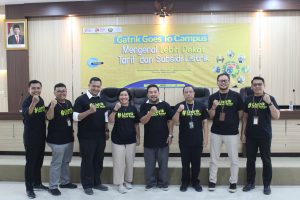
Meanwhile, FEB UNS Lecturer from Development Economics Study Program, Hery Sulistio Jati N S, SE., MSE., emphasized the need for the right momentum in determining the increase in TDL (Base Electricity Rate). That is by considering when the short-term and long-term are more optimistic.
Furthermore, the electricity subsidy structure needs to be built with a more progressive formula to ensure that the electric energy trilemma does not progress any further. This aims to ensure that the electric energy trilemma does not become an impossible issue at the macroeconomics level with high costs when Indonesia had optimized most aspects back in 1998.

